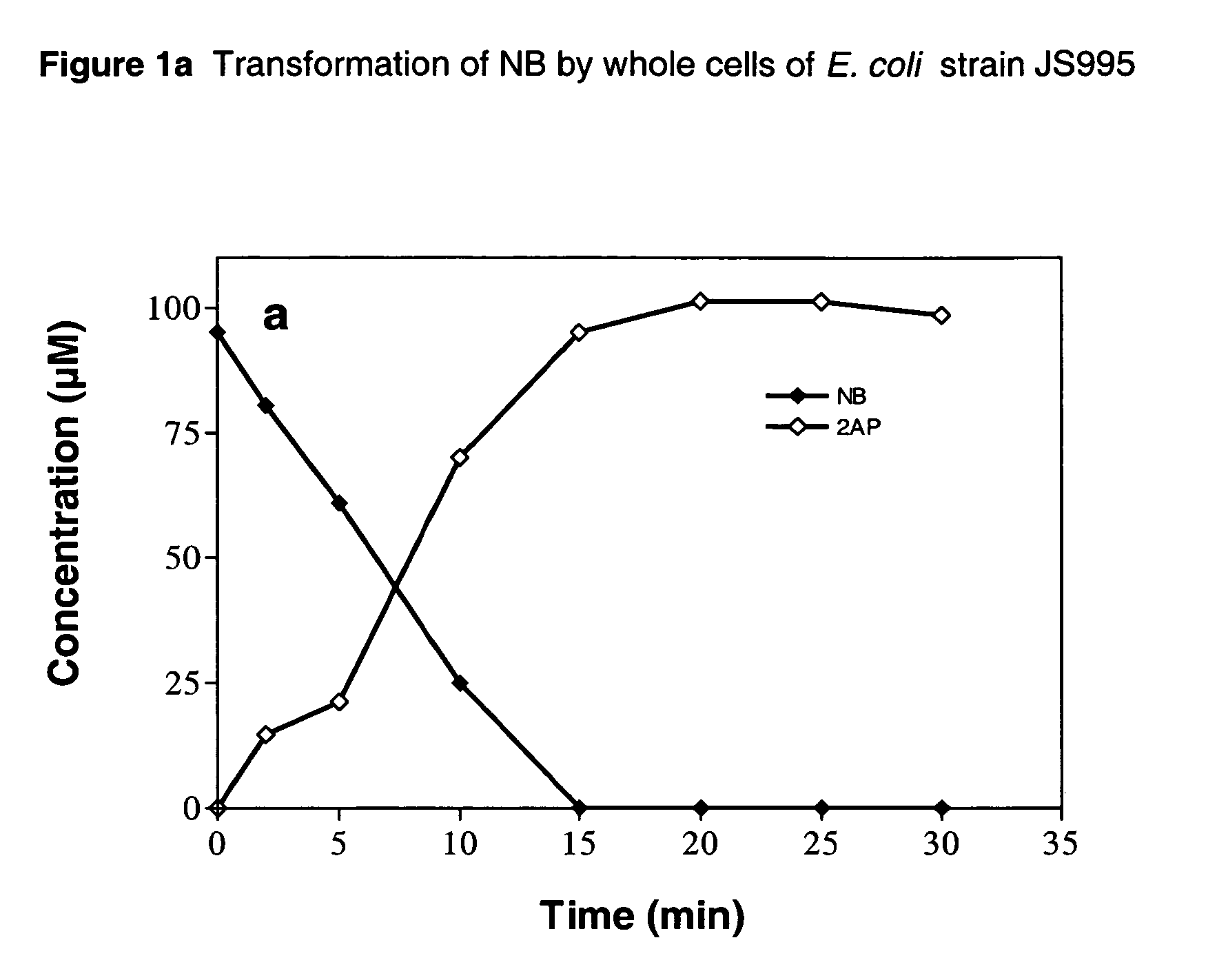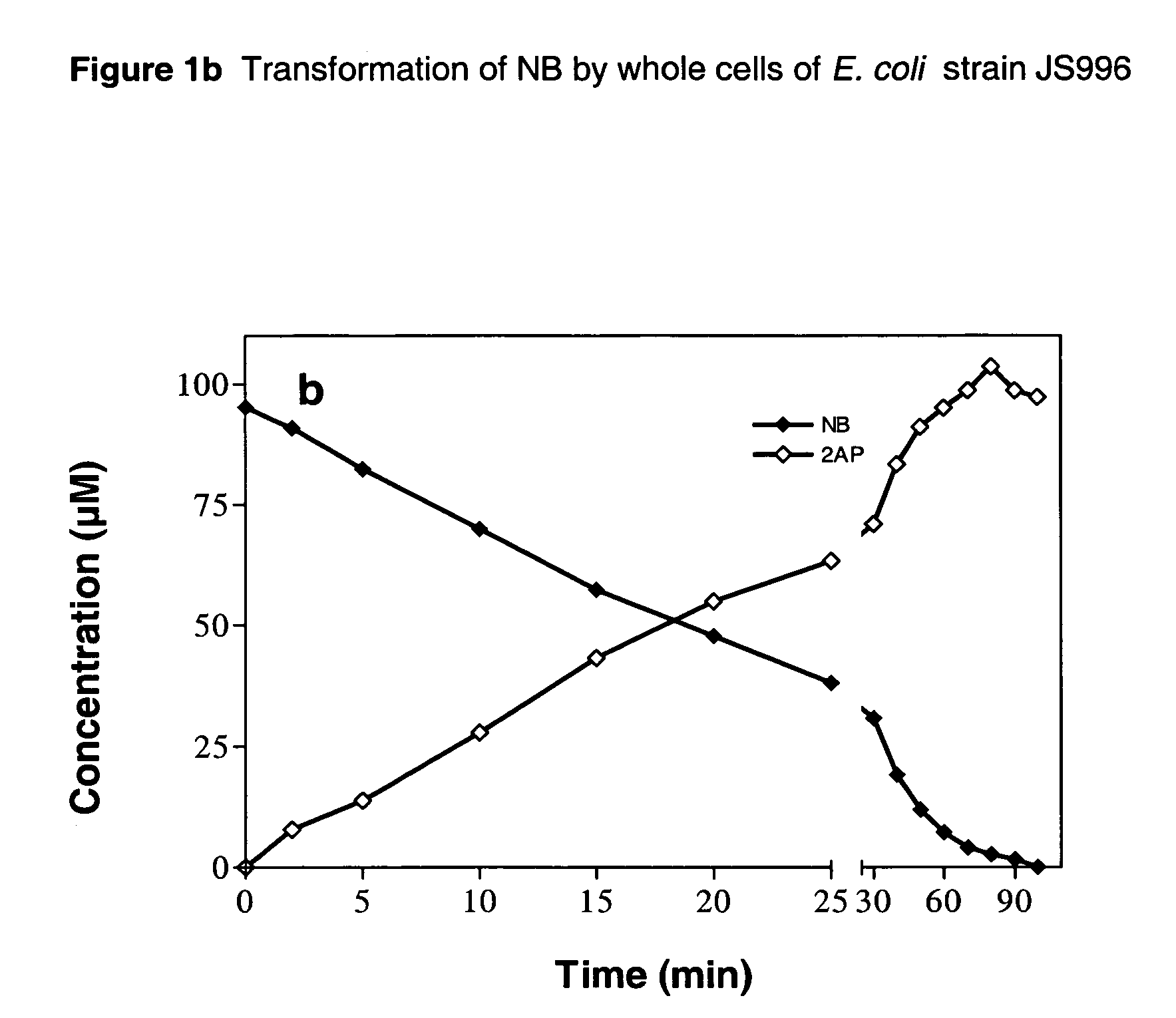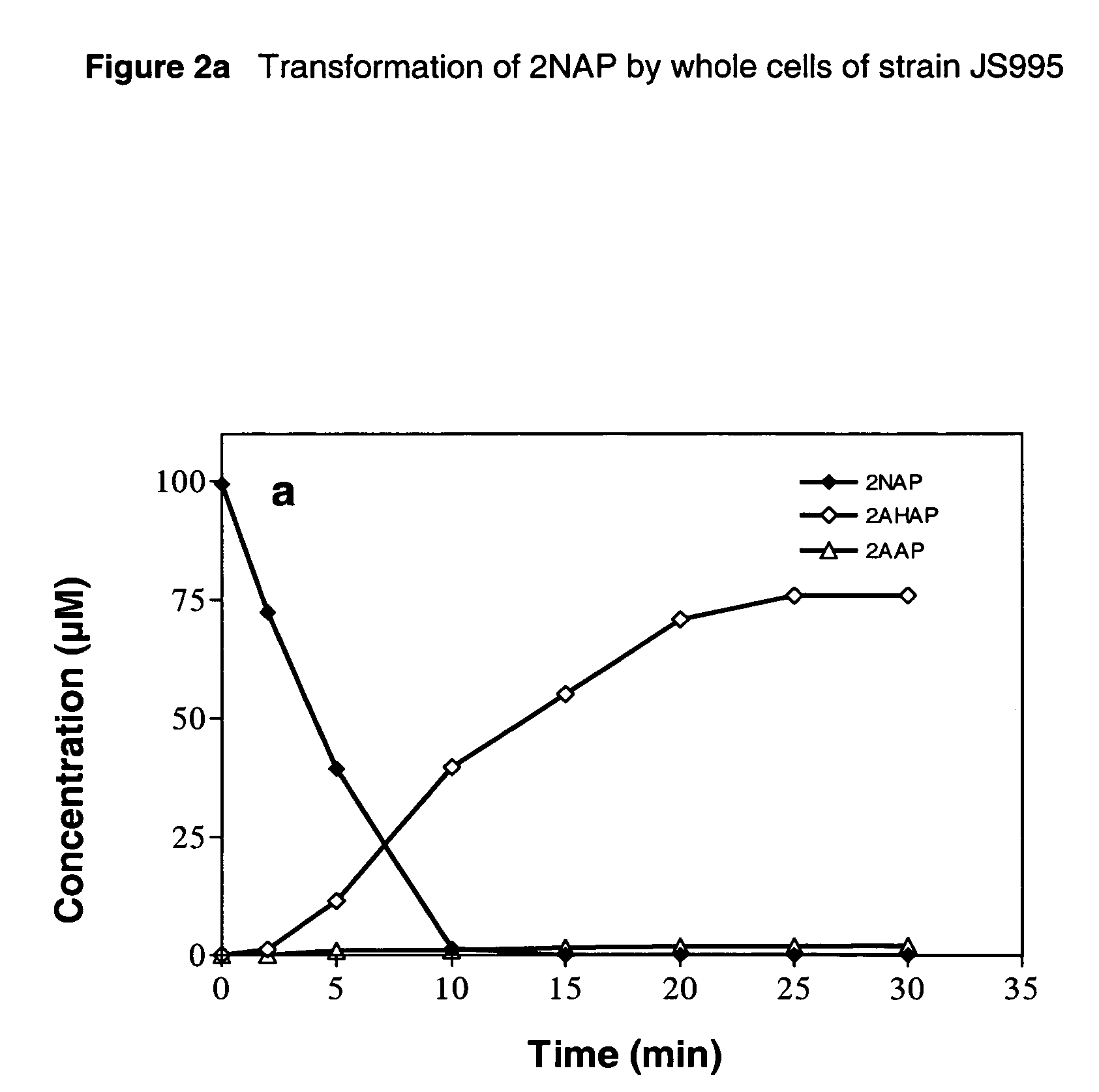Biological process for the conversion of nitroarenes to ortho-aminophenols using recombinant E. coli strains
a technology of nitroarenes and biosynthesis, which is applied in the direction of enzymology, organic chemistry, transferases, etc., can solve the problems of limiting the usefulness of purified or immobilized enzymes in the production of aminophenols, and the use of purified or immobilized enzymes is problemati
- Summary
- Abstract
- Description
- Claims
- Application Information
AI Technical Summary
Benefits of technology
Problems solved by technology
Method used
Image
Examples
example 1
Expression of Reductases and Mutase with the Recombinant Systems
[0051]The activity of the nitroreductases towards the selected nitroaromatic compounds differed substantially between the two strains (Table 2). No nitroreductase activity toward NB or 2NAP was detected in extracts prepared from induced cells of the host strains carrying only the vectors. The specific activity of the recombinant NB nitroreductase expressed in strain JS995 with NB as the substrate was similar to that reported previously (2.4 U mg−1 protein) in wild-type JS45. The NB nitroreductase in cell extracts of strain JS995 catalyzed rapid transformation (specific activity>1.1 U mg−1 protein) of 13 out of 22 nitroaromatic compounds tested. Transformation rates did not seem to be affected by the position of the nitro group relative to the other substituent for the mononitro compounds. Both 1,3-dinitrobenzene (DNB) and 2,4,6-trinitrotoluene (TNT) were better substrates for NB nitroreductase than its physiological sub...
example 2
Biosynthesis of a Variety of Aminophenols Using Recombinant Strain JS996
[0054]Initially, to determine the potential of strain JS996 in the production of aminophenols, resting cell experiments were performed by incubating IPTG-induced cells with various nitroaromatic compounds. The rates of substrate transformation were 2.0, 0.47, 1.62, 1.13 and 0.93 nmol min−1 mg−1 protein for NB, 2-nitrotoluene, 3-nitrotoluene, 4-nitrobiphenyl ether and 1-nitronaphthalene, respectively, during the initial 10 min of reaction. The reaction products were 2-aminophenol, 2-amino-3-methylphenol, 2-amino-4-methylphenol, 4-amino-5-phenoxyphenol, and 2-amino-1-naphthol, respectively, and the corresponding conversion efficiencies at the end of 30 min incubation were 98.6, 27, 63.8, 100 and 53.6. The results suggest that the recombinant strain could be used to convert a variety of nitroaromatic compounds to the corresponding aminophenols.
example 3
Comparison of Recombinant Strains JS995 and JS996 with Respect to Nitrobenzene Conversion to 2-Aminophenol
[0055]Strains JS995 and 996 were compared for their ability to produce 2AP from NB in a time-course experiment performed at 30° C. The conversion of NB was substantially faster in strain JS995 than in strain JS996 (FIG. 1). The specific activities for transformation of NB and production of 2AP during the initial 10 min of reaction with strain JS995 were 13.4 and 12.5 nmol min−1 mg−1 protein, while those with strain JS996 were 5.4 and 5.0 nmol min−1 mg−1 protein. The results taken with the data in Table 2 related to substrate range suggest that strain JS995 expressing nbzA and habA genes both derived from strain JS45 would be a more suitable biocatalyst for synthesis of ortho-aminophenols from the corresponding nitroaromatic compounds.
[0056]The transformation of NB by whole cells of E. coli strain JS995 is illustrated in FIG. 1a. Similarly, the transformation of NB by whole cells...
PUM
| Property | Measurement | Unit |
|---|---|---|
| pH | aaaaa | aaaaa |
| pH | aaaaa | aaaaa |
| volumes | aaaaa | aaaaa |
Abstract
Description
Claims
Application Information
 Login to View More
Login to View More - R&D
- Intellectual Property
- Life Sciences
- Materials
- Tech Scout
- Unparalleled Data Quality
- Higher Quality Content
- 60% Fewer Hallucinations
Browse by: Latest US Patents, China's latest patents, Technical Efficacy Thesaurus, Application Domain, Technology Topic, Popular Technical Reports.
© 2025 PatSnap. All rights reserved.Legal|Privacy policy|Modern Slavery Act Transparency Statement|Sitemap|About US| Contact US: help@patsnap.com



